Australian Tropical Rainforest Plants - Online edition
Neoalsomitra clavigera (Wall.) Hutch.

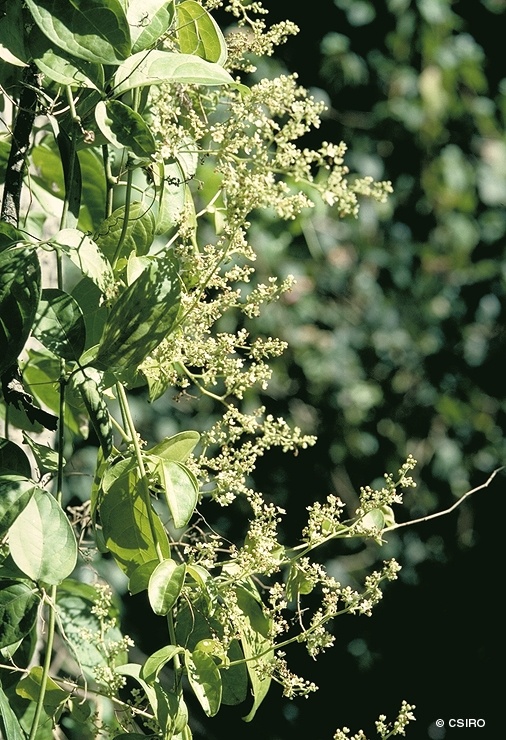
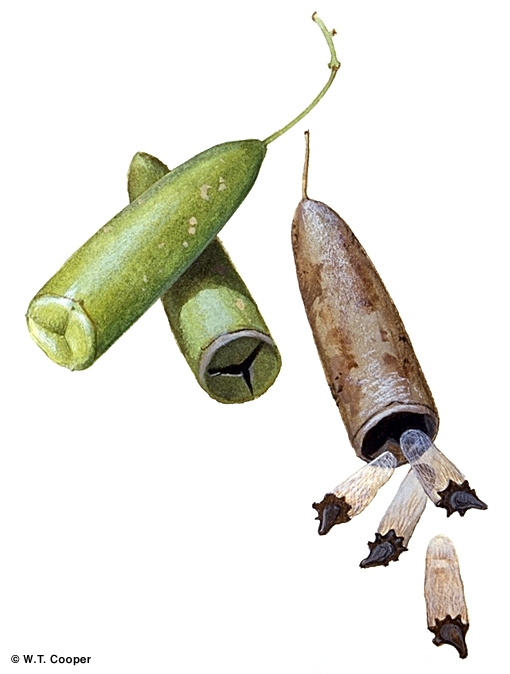
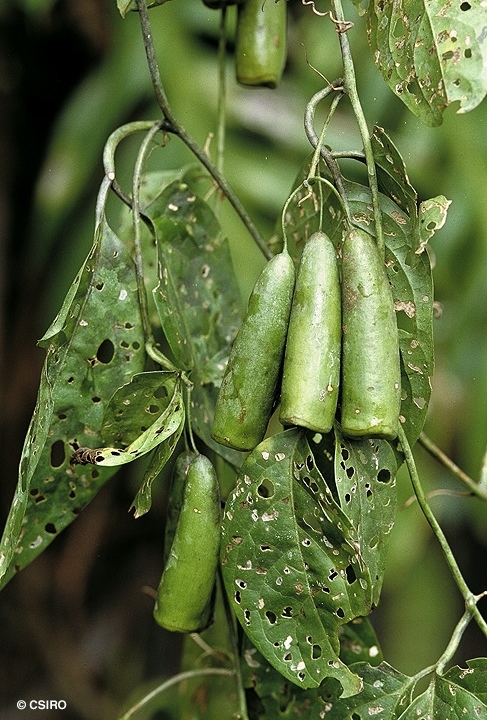
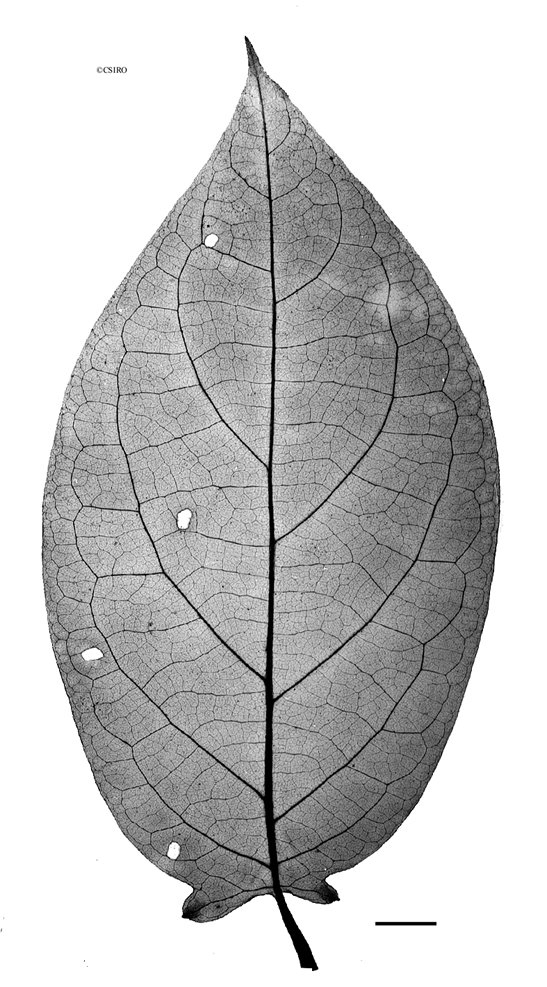
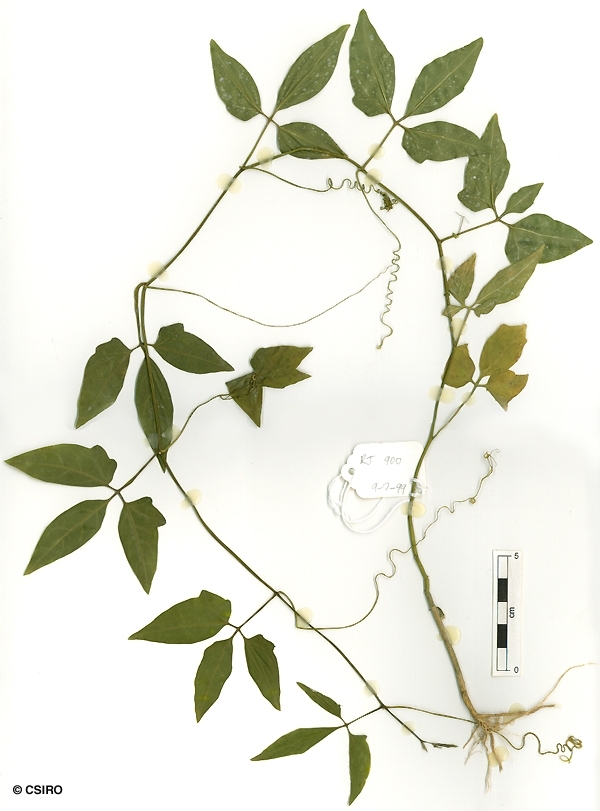

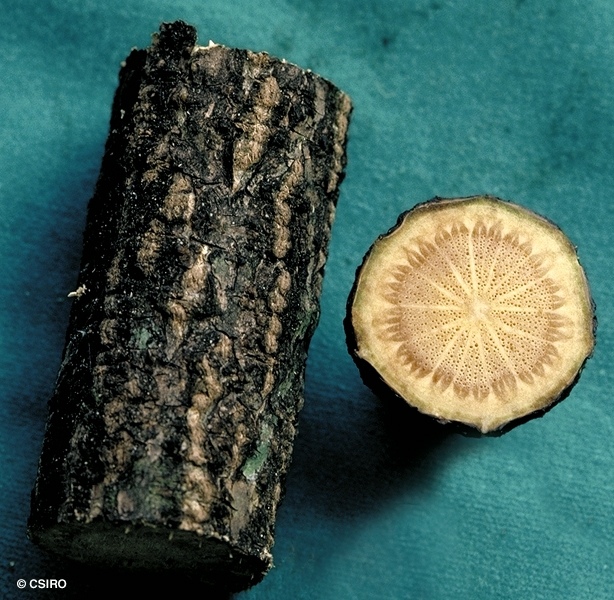
Hutchinson, J. (1942) Annals of Botany 6: 101.
Vine stem diameters to 4 cm recorded. Bark comparatively thick. Blaze odour resembles that of cucumber (Cucumis sativus). Blaze marked by fibrous stripes.
Leaflet blades about 5-12.5 x 1.8-7 cm, middle leaflet larger than the lateral leaflets, all leaflet stalks about 0.5-0.8 cm long. Underside of the leaflet blades clothed in numerous pale glands and sparsely clothed in short pale hairs. Lateral veins about 6-8 on each side of the midrib. Lateral leaflet blades usually have a well developed glandular lobe near the base. Transverse sections of twigs show quite large vessels in discrete strands of xylem. Tendrils +/- axillary, often branched with 2 arms.
Inflorescence about 10-15 cm long, arising in the leaf axil usually beside a tendril. Male flowers: Flowers about 6-7 mm diam. on pedicels about 3 mm long. Calyx lobes about 1 mm long. Petals about 2.8 mm long. Stamens in the centre of the flower in a five-armed structure, filaments less than 1 mm long. Female flowers: Flowers borne in axillary panicles up to 40 cm long. Flowers about 10 mm diam. Sepals triangular, about 3 x 1.5 mm. Petals obovate, about 6 x 3 mm. Ovary about 10-12 x 2-2.5 mm. Stigmas 2 or 3, +/- crescent-shaped.
Fruits shaped like an elongated thimble +/- cylindrical, about 5-10 x 1.5-1.8 cm. Carpels opening by 3 valves which fold inwards. Seeds numerous, arranged in 3 vertical rows. Seed + wing about 20-24 mm long, wing papery, pale brown. Each seed about 8-9 mm long, margin lobed or sculptured, wing about 20 x 8 mm. Embryo about 6-7 x 3 mm, radicle very short and much narrower than the cotyledons.
Cotyledons thick and fleshy, cuneate, about 8-10 x 4-5 mm, midrib only visible on the upper surface, petioles absent or very short. First true leaves trifoliolate, produced at the same level as the cotyledons. Middle leaflet much larger than the lateral leaflets. Lateral leaflets with a prominent large rounded tooth near the base on one side of the blade. Midrib raised on the upper surface. At the tenth leaf stage: leaf trifoliolate or pedate with 5 leaflets, leaflet blade margin lobed or coarsely toothed. Lateral veins generally forming loops inside the blade margin. Tendrils simple or branched, attached to the stems beside the petiole bases. Crushed roots smell like cucumbers (Cucumis sativus). Seed germination time 17 to 18 days.
Occurs in CYP, NEQ and CEQ. Altitudinal range from near sea level to 750 m. Grows in lowland, upland rain forest and sometimes in monsoon forest. Also occurs in New Guinea.





